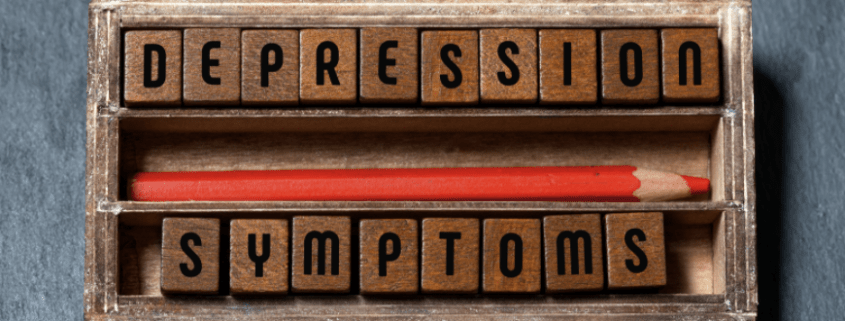
Understanding Signs and Symptoms of Depression
Signs and Symptoms of Depression
For many people, living with depression seems like a lifetime sentence of feeling sad, hopeless, and worthless. Getting through a normal day may feel like a mountain that’s too tall to climb. Yet, it is important to know that it doesn’t have to be that way. Depression is a treatable medical condition!
No matter how it may feel, depression is not a “one size fits all” condition. Though it produces a range of commonly recognized symptoms, depression may be more apparent in some people than in others. If you or someone you know is suffering from depression, it’s helpful to understand a variety of the signs and symptoms – and when to seek help.
According to the American Psychiatric Association, depression (also known as MDD or Major Depressive Disorder) is a common and serious medical illness that negatively affects how you feel, think, and interact with others and the world around you.
Depression affects an estimated one-in-15 adults (6.7%) in any given year. And one-in-six people (16.6%) will experience depression at some time in their life. Depression can occur at any time, yet on average, first appears during the late teens to mid-20s.
A wide range of different mental health disorders include depression symptoms, and there are several different types of depression. That’s why it is so important to be evaluated and diagnosed by a qualified mental health professional or other medical provider in identifying treatment options.
Depression Symptoms In Adults
Depression is as individual as the person who is living with the disorder. Mental health and medical professionals generally consider a depression diagnosis when symptoms last at least two weeks and present a significant change in your previous level of functioning.
- Prolonged sadness or unexplained crying spells
- Significant changes in appetite and sleep patterns
- Irritability, anger, worry, agitation, or anxiety
- Pessimism, indifference
- Loss of energy, persistent lethargy
- Feelings of guilt, worthlessness
- Inability to concentrate, indecisiveness
- Inability to take pleasure in former interests, social withdrawal
- Unexplained physical problems, such as back pain or headaches
- Recurring thoughts of death or suicide
Also, it may be important to get some blood work prior to a diagnosis. This is because some medical conditions (e.g., thyroid problems, a brain tumor or vitamin deficiency) may mimic depression symptoms. So, it’s a good idea to rule out any other general medical causes of symptoms.
In any instance you feel your or another person’s life is in danger due to suicidal thoughts or actions, call 911 immediately. Other important ways to seek help with depression:
- Call your doctor or mental health professional.
- Call the National Suicide Prevention Lifeline at 1-800-273-TALK (1-800-273-8255).
- Reach out to a close friend or loved one.
- Seek additional support from faith-based groups and organizations.
Treatment options for depression
If you are someone living with a depression diagnosis, it is important to remember that the condition does not define who you are as a person. Depression does not indicate weakness or lack of will. You can get better and there is help available – even for the most resistant forms of depression.
There are a wide range of treatment options available for people living with depression. Most first-line treatment options include antidepressants, talk therapy, and supportive coping mechanisms such as exercise. Yet, if you haven’t experienced adequate symptom relief with these approaches, Transcranial Magnetic Stimulation (TMS) therapy may help. This innovative non-invasive treatment is FDA-approved for depression. TMS therapy trials have shown to produce lasting, positive effects on brain function in people who have otherwise experienced a form of treatment-resistant depression. When you’re ready to explore a better option for your depression, TMS Therapy Global Network is here to help.
With TMS therapy, no post-treatment recovery time is required and patients may return to daily routines immediately following a session. The amount of time required for a treatment is based on the frequency, intensity, and range of stimulation needed for a patient’s diagnosed condition, but the average is around 18 minutes.
Start by taking the first step toward feeling better. Call us today at 502-742-8182 – TMS Therapy Global Network is here to answer your questions!
[ninja_form id=2]
Leave a Reply
Want to join the discussion?Feel free to contribute!